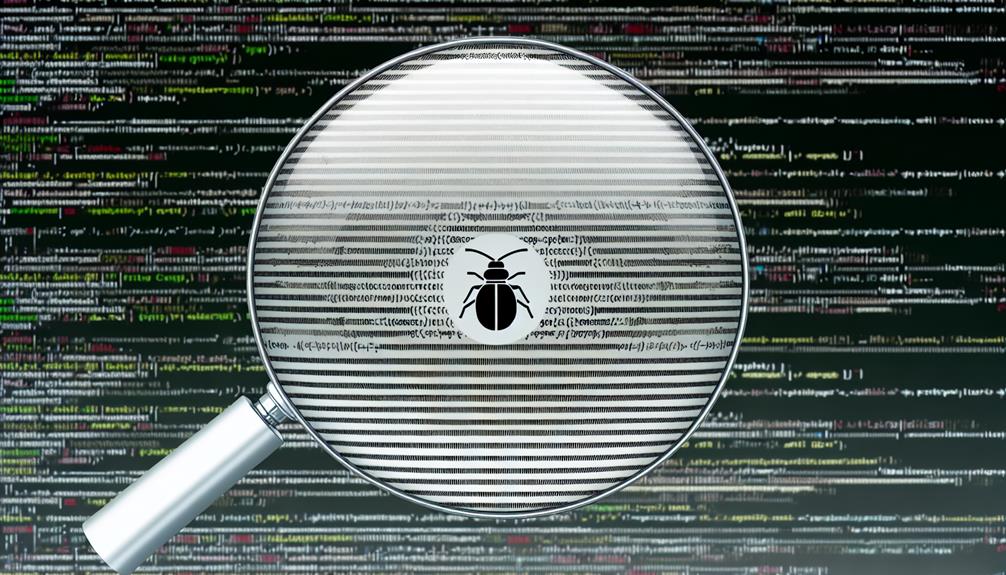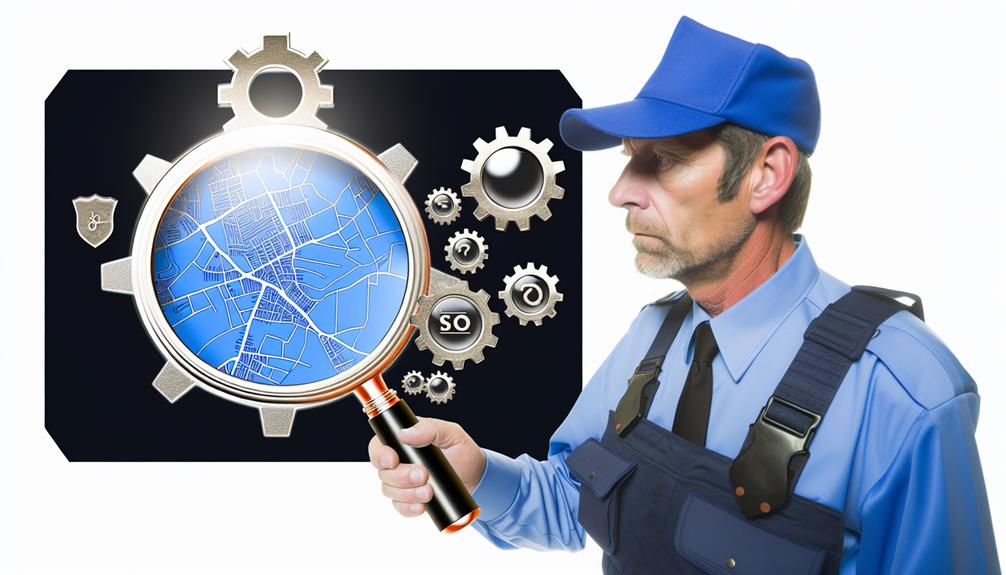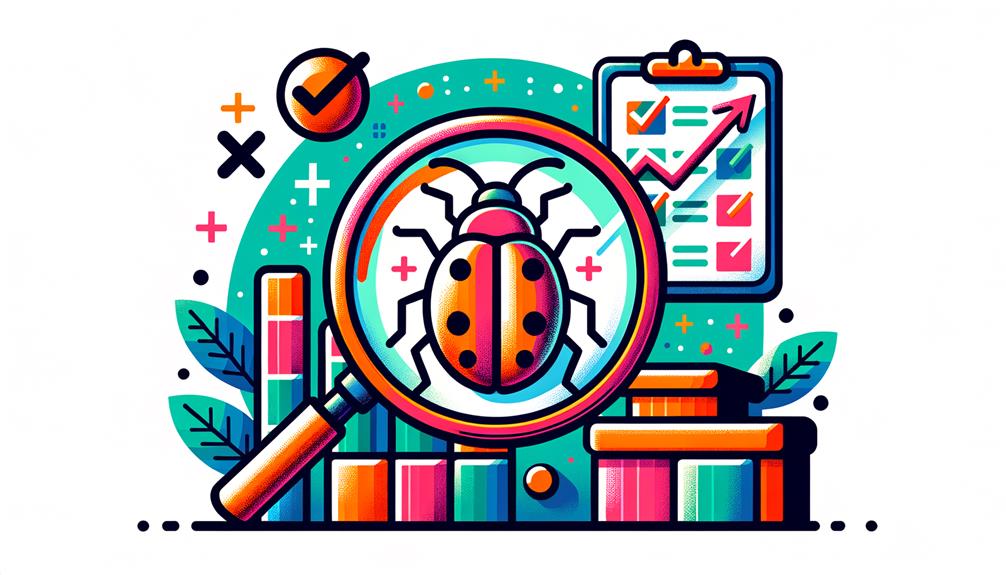As a pest control exterminator, you track pests, you eliminate them, and you prevent their recurrence. Similarly, mastering the art of SEO requires you to track your website’s performance, eliminate weak points, and prevent future SEO issues.
But here’s the catch, SEO is a complex, ever-changing field requiring constant vigilance and adaptation. While you’re undoubtedly an expert in pest control, navigating the labyrinth of SEO can be daunting.
Well, worry not. This guide is here to equip you with 14 essential SEO tips, tailored specifically for pest control exterminators like you. Stick around, and you’ll uncover how to transform your website from a mere online presence into a powerful, pest-fighting lead generator.
Table of Contents
ToggleUnderstanding SEO Basics

Before diving into specific SEO strategies for pest control exterminators, it’s essential that you grasp the basics of SEO and how it can impact your online presence.
SEO, or Search Engine Optimization, is the process of enhancing your website to improve its visibility when people search for products or services related to your business in Google, Bing, and other search engines.
The SEO fundamentals lie in understanding the search engine algorithms. These complex systems are used to retrieve data from their index and instantly deliver the best possible results for a query. The search engine uses a combination of algorithms and numerous ranking signals to deliver webpages ranked by relevance on its search engine results pages (SERPs).
In order to win over these search engine algorithms, you’ve got to master a few critical SEO elements such as keyword research, quality content, link building, and user experience.
Remember, SEO isn’t a one-time task, but a continuous process. You’ll need to monitor your website’s performance regularly, make necessary adjustments, and stay updated with the latest algorithm changes.
Keyword Research Importance
Diving into keyword research, it’s crucial to realize its importance as it serves as the backbone of your SEO strategy, guiding you to understand what your potential customers are searching for online. You get the insight to align your website and services with their needs effectively. By using the right keywords, you can increase your visibility amongst people who are actively seeking pest control services.
One strategic approach is the Competitor Keyword Analysis, an effective method to identify what keywords your competitors are ranking for. It offers you a chance to optimize your content and outrank them.
Furthermore, don’t underestimate the power of Long tail Keyword Usage. These are specific phrases that users are likely to search for. While they mightn’t generate a high volume of traffic, they can attract highly targeted traffic. This leads to better conversion rates as the users are likely to find exactly what they’re looking for.
On-Page SEO Techniques

While the right keywords can significantly boost your visibility, it’s your on-page SEO techniques that will ensure your pest control website ranks well in search engine results. On-page SEO is all about optimizing individual web pages so they rank higher and earn more relevant traffic.
One critical aspect of on-page SEO is meta description optimization. Your meta descriptions should be clear, compelling, and contain relevant keywords. They’re like an ad for your webpage, so make them count. Remember, Google typically truncates snippets over 160 characters, so keep it concise.
Another vital on-page SEO technique is optimizing your image alt attributes. These descriptions help search engines understand the content of your images. They’re also essential for visually impaired users who rely on screen readers. When adding alt attributes, ensure they’re relevant to the image and the content on the page.
Employing these on-page SEO techniques won’t only make your website more accessible, but also increase its visibility in search engine results.
Off-Page SEO Strategies
Just as important as your on-page SEO efforts, off-page SEO strategies can significantly enhance your pest control website’s visibility and ranking on search engines.
One of the key off-page techniques is link building. It’s not simply about getting as many links as you can, but about obtaining quality and relevant links. Reach out to bloggers, industry experts, and complementary businesses to get your website mentioned and linked. This not only drives traffic but also boosts your site’s authority, helping it climb up the ranks.
Another critical strategy is competitor analysis. You must understand what your competitors are doing well and where they’re falling short. Are there sites linking to them that could also link to you? What types of content are they sharing that’s earning them links?
Utilizing Local SEO

In the world of pest control, leveraging local SEO can make a significant difference in your business’s online presence, helping you reach potential customers in your specific geographic area. By focusing on tactics like Google My Business optimization and local directory submissions, you can improve your visibility to those searching for pest control services near them.
- Google My Business optimization: This is a free tool that lets you manage how your business appears on Google Search and Maps. Include your business name, location, and hours; manage and respond to customer reviews; add photos; and learn where and how people are searching for you.
- Local directory submissions: Submitting your business information to local directories increases your online visibility and helps with local SEO.
- Online reviews and ratings: Encourage happy customers to leave positive reviews. High ratings can improve your local search ranking.
- Local keyword optimization: Use location-based keywords in your website content, meta descriptions, and title tags. This helps Google understand where you operate and show your site to potential customers in those areas.
Mobile-Friendly Website Necessity
Without a doubt, ensuring your pest control website is mobile-friendly isn’t just a nice-to-have feature anymore, but a crucial necessity for reaching and engaging potential customers on the go. A responsive design allows your site to adapt to any screen size, making it easier for users to navigate and interact with your content, whether they’re on a smartphone, tablet, or desktop.
Site speed also plays a massive role in mobile user experience. If your site takes more than a few seconds to load, you’re likely to lose potential customers. People are impatient when browsing, especially when they’re dealing with an urgent pest problem. They won’t wait for a slow site to load; they’ll simply move on to your competitors.
Importance of Quality Content

While a fast, mobile-friendly website can draw potential customers in, it’s the quality of your content that will keep them engaged and convince them to choose your pest control services. Content authenticity is crucial in establishing trust with your audience. It’s not enough to just have engaging content; it needs to be factual, relevant, and valuable to the reader.
To maximize user engagement, here are four key principles to keep in mind:
- Originality: Your content should be unique and original. Google algorithms favor fresh and unique content, boosting your SEO ranking.
- Relevance: Make sure your content aligns with the needs and interests of your audience. Understanding your target market’s concerns about pest control will guide you in creating suitable content.
- Consistency: Regularly update your website with fresh content. This not only helps with SEO, but also maintains your audience’s interest.
- Engagement: Encourage your audience to interact with your content through comments, questions, or sharing.
SEO-Friendly URL Structures
Ever wondered how to boost your pest control website’s SEO ranking with URL structures? Understanding the URL length impact and efficient redirects management is paramount.
An SEO-friendly URL structure is concise, coherent, and easy for search engines to crawl. Keep your URLs short and simple. Overly long URLs can confuse search engines and potential customers alike. Remember, the URL length impact is significant; shorter URLs generally rank higher on search engine results.
But there’s more. Including relevant keywords in your URLs can also boost your visibility. For instance, instead of ‘www.yoursite.com/p123’, consider ‘www.yoursite.com/pest-control’. This not only improves SEO but also provides users with a clear idea of the page content.
Redirects management is another crucial aspect. When you change a URL, ensure to set up a 301 redirect from the old URL to the new one. This prevents loss of traffic and maintains the SEO value of the original page.
In short, smart URL structuring can significantly enhance your website’s SEO performance. So, don’t overlook the power of effective URL length and redirects management.
Leveraging Social Media Platforms

Harnessing the power of social media platforms can skyrocket your pest control business’s online visibility, driving more traffic to your website and boosting your SEO ranking. Social engagement strategies and influencer partnerships are key to achieving this.
- Craft a Social Media Strategy: Don’t just post. Plan. Your strategy should include goals, audience identification, competitive analysis, and a content plan.
- Engage Your Audience: Don’t just speak, listen. Respond to comments, answer queries, and engage in conversations. This fosters trust and boosts your social media presence.
- Utilize Influencer Partnerships: Collaborate with influencers who align with your brand. Their followers can become your potential customers.
- Monitor and Adjust: Track your engagement and performance. Use these insights to adjust your strategy and optimize results.
The Role of Backlinks
Beyond strengthening your social media presence, another crucial SEO strategy to consider involves understanding and leveraging the power of backlinks. These are essentially hyperlinks from external websites pointing to your own, and they can significantly boost your pest control site’s ranking power.
Firstly, focus on link building strategies. You can’t just sit and wait for others to link to your site. Reach out to bloggers, influencers, or businesses in the pest control industry, and seek opportunities for guest posts or partnerships. Remember, quality beats quantity. High-quality backlinks from reputable sources have more influence than numerous low-quality ones.
Secondly, work on anchor text optimization. The clickable text in a hyperlink, known as the anchor text, should be relevant to the linked page and include a keyword. Over-optimized anchor text, however, can backfire, so balance is key.
Monitoring SEO With Analytics
While you’re working on building backlinks and optimizing anchor text, it’s crucial to regularly monitor your SEO progress using analytics. It’s not enough to just implement SEO strategies; you need to track their effectiveness. This involves analyzing competition, tracking conversions, and making necessary adjustments.
Here are four key steps to monitor your SEO with analytics:
- Set Up Analytics: Utilize tools like Google Analytics. They’ll provide you with crucial data about your website’s traffic, user behavior, and more.
- Track Keywords: Keep an eye on how your chosen keywords are performing. Are they driving traffic to your site? If not, it might be time for a change.
- Conversion Tracking: This will help you understand which strategies are leading to customer conversions. Are your SEO efforts resulting in more inquiries or bookings? If not, find out where the disconnect is and fix it.
- Analyzing Competition: Regularly analyze your competitors’ SEO efforts. What keywords are they ranking for? What kind of content are they producing? Use this information to fine-tune your own strategy.
SEO and User Experience
Incorporating user experience (UX) into your SEO strategy isn’t just a good idea, it’s essential for driving more traffic and increasing conversion rates on your pest control exterminator website. A positive UX keeps visitors on your site longer, boosting user engagement and signaling to search engines that your content is valuable.
Consider your site navigation. It should be intuitive, making it easy for users to find what they’re looking for. If clients can’t locate your services or contact information within a few clicks, they’re likely to leave and find a competitor’s website that’s easier to navigate.
Don’t overlook the importance of site speed. Users have little patience for slow-loading pages. If your site takes too long to load, you’ll lose potential clients. Improve your site’s speed by optimizing images and limiting the use of heavy, slow-loading elements.
Lastly, make sure your site is mobile-friendly. More people browse the web on their phones than on desktops, so if your site isn’t mobile-friendly, you’re missing out on a significant portion of potential clients. A positive UX leads to higher user engagement, which, in turn, improves your SEO.
SEO in Website Design

Building on the importance of user experience for SEO, you must also consider how your website’s design plays a pivotal role in your search engine optimization strategy. In particular, you need to understand the Responsive Design Impact and keep up with SEO Algorithm Changes.
Your website’s design should be not just aesthetically pleasing, but also user-friendly and easy to navigate. More importantly, it needs to be responsive. A responsive design means your website can adapt to various screen sizes, making it accessible to users regardless of the device they’re using. This is crucial since Google’s SEO algorithms prioritize mobile-friendly sites.
Consider the following points to maximize the impact of your design on your SEO strategy:
- Make your site mobile-friendly: Google’s SEO algorithm changes have increasingly favored mobile-friendly websites.
- Site speed matters: A slow-loading site can drive users away and negatively impact your search ranking.
- Use strategic keywords: Incorporate your keywords naturally within your site’s content and meta descriptions.
- Quality over quantity: Don’t overload your site with content; focus on generating quality content that’s unique and relevant.
Ongoing SEO Maintenance and Updates
To keep up with the ever-evolving SEO landscape, it’s essential that you regularly maintain and update your pest control website’s SEO practices. This continuous process, often referred to as technical SEO, requires strategic updates to ensure your site remains on top of search engine results.
Stay informed about the latest algorithm updates. Search engines like Google frequently change their algorithms to provide the most relevant results to users. These changes can impact your site’s ranking, so it’s crucial you adapt accordingly. Regularly check search engine news and SEO blogs for these updates.
Additionally, ensure your site is user-friendly and responsive. Slow load times and difficult navigation can harm your ranking. Regularly test your site’s speed and mobile-friendliness.
Review and update your keywords regularly. As pest problems change with seasons, so do searches. Adjust your keywords according to these trends to maintain relevancy in search results.
Conclusion
Navigating through the maze of SEO can seem daunting, but it’s crucial for your pest control business. Focus on understanding the basics, researching keywords, enhancing your on-page and off-page SEO, exploiting local SEO, and continually monitoring your progress.
Remember, SEO is like a game of chess – it requires strategy, patience, and constant moves. Keep your user’s experience in mind and your website design SEO-friendly.
Stay informed, strategic, and focused – your business’s visibility depends on it.





